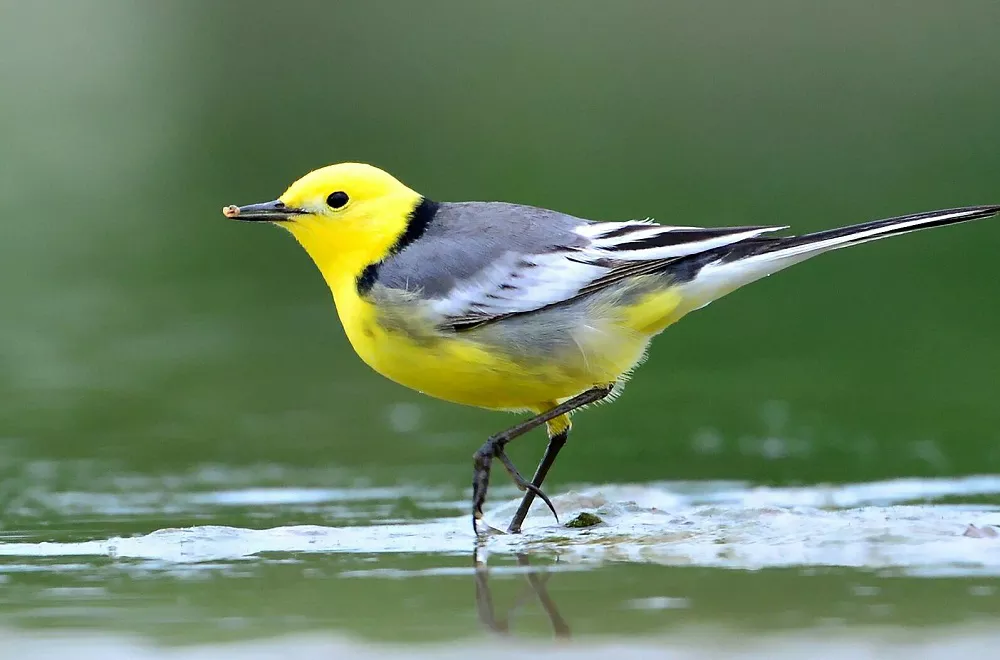The citrine wagtail (Motacilla citreola) is a small songbird in the family Motacillidae. The body is about 18 cm long, with a slender body and a slender beak. Mostly active at the water’s edge, the tail swings up and down when resting, looking for insects singly or in pairs, and fluctuates in waves when flying. The main food in summer is insects, and some grass seeds in autumn; it is a ground-dwelling bird, and it likes swamp meadows, tundra belts and willow bushes.
What does citrine wagtail look like
The citrine wagtail male has a bright yellow head, a black or gray back, some have a narrow black collar under the yellow nape, and a dark gray waist. Tail overlying feathers and tail feathers are dark brown, and the outer two pairs of tail feathers have large wedge-shaped white spots. The wings are dark brown, and the large coverts, middle coverts and inner flight feathers on the wings have wide white feathers. Underparts bright yellow. The forehead and side of the head of the female bird are bright yellow, the top of the head is yellow, and the feather tips are mixed with a little taupe. The rest of the upper body is black gray or gray, with yellow eyebrow lines. The lower body is yellow. The iris is dark brown or dark brown, the mouth is black, and the tarsus is black.
Citrine wagtail habitat
It mainly inhabits various habitats such as lakesides, riversides, farmlands, grasslands, and swamps.
Citrine wagtail living habit
They often move in pairs or small groups, and sometimes they move alone, especially when they are looking for food. During the migration season and winter, they sometimes gather in large groups. They often roost in groups at night, and occasionally roost with other wagtails. It starts to move after the sun comes out, and often trots along the water’s edge to hunt for food. When perched, the tail often swings up and down. It is a summer migratory bird in China, and part of it overwinters in the coastal provinces and regions of southern China, southern Yunnan and southern Tibet. It moves to the northern breeding ground in mid-to-late April every year.
Citrine wagtail food
It mainly feeds on insects such as Lepidoptera, Coleoptera, Diptera, Hymenoptera and Hemiptera, and occasionally eats a small amount of plant food. Call: Wheezing tsweep, not as hoarse as Gray or Yellow Wagtail. Calls from perch or in flight, trilling for repetition.
Mode of reproduction
The breeding season is from May to July. Usually nests on the ground or in the grass under the mound. The nest is made of withered grass leaves, grass stems, grass roots, moss and other materials, and is lined with soft materials such as hair and feathers. Each litter lays 4-5 eggs, the eggs are oval, blue, off-white or ochre, covered with light brown spots, and the size of the eggs is 18-22 mm × 14-16 mm.


 Facebook
Facebook  Instagram
Instagram  Youtube
Youtube 